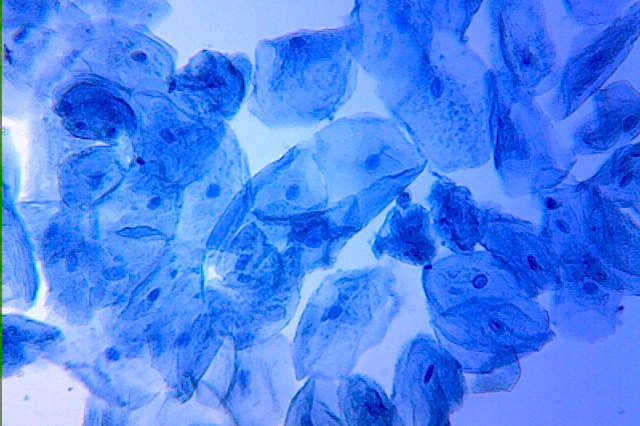Researchers at the Wellcome Sanger Institute in the University of Cambridge, UK, have developed an atlas of all immune cells present in the human body or Human Cell Atlas. This novel research has primarily focused on immune cells found inside tissues, which are relatively less explored than cells circulating in the bloodstream.
Previously, researchers have created genetic maps—revealing the comparative location of two genetic characters—of undiscovered populations of immune cells across numerous tissues to offer novel insights into the functioning of the human immune system.
The primary goal of the Human Cell Atlas is to map each and every type of cell present in the human body to change our understanding and awareness of physiology, diseases, and infections.
Traditionally, awareness of the human immune system has been restricted to the function of cells found in circulating blood; nevertheless, immune cells located inside other tissues also have a crucial role in fighting infection and preserving health. Domínguez Conde from the Wellcome Sanger Institute and collaborators performed RNA sequencing from 330,000 distinct immune cells collected from the adult body to obtain insights into their function.
The team developed a curated directory or list of immune cells present in our body, following which they created CellTypist, a machine-learning tool. This tool is able to store the enormous volume and variant of immune cells and enables the automatic identification of approximately 100 cell types. The researchers used this tool to recognize approximately 100 dissimilar types of immune cells. These cells consisted of T cells (cells that develop from stem cells in the bone marrow and fight against cancer and infections), B cells (a type of white blood cell that produces antibodies to provide immunity), and specific macrophages (a type of white blood cell that identifies and kills harmful microorganisms and bacteria), in addition to their distribution across diverse tissues.
The findings revealed resemblances across particular families of immune cells, including macrophages, in addition to variances in others. For example, the research team identified that particular memory T cells revealed exclusive features based on the tissue they were located in. Moreover, they discovered novel insights into the immune system’s memory by sequencing the antigen receptors present on B cells and T cells. Exposure of the T and B cells to an antigen resulted in different states, such as states observed in viruses and bacteria.
This research will provide a comprehensive understanding of cells using the mentioned atlas and explain numerous facets of human health and illness. The research team compared specific immune cells in numerous tissues from identical donors, which helped them recognize dissimilar types of memory T cells located in diverse areas of the human body. This finding, in turn, would lead to substantial implications in infection control. The findings of this research are openly accessible and will act as the context for vaccine development or enhancing the protocol of immune therapies for cancers.
References
Domínguez Conde C, Xu C, Jarvis LB, Rainbow DB, Wells SB, Gomes T, Howlett SK, Suchanek O, Polanski K, King HW, Mamanova L, Huang N, Szabo PA, Richardson L, Bolt L, Fasouli ES, Mahbubani KT, Prete M, Tuck L, Richoz N, Tuong ZK, Campos L, Mousa HS, Needham EJ, Pritchard S, Li T, Elmentaite R, Park J, Rahmani E, Chen D, Menon DK, Bayraktar OA, James LK, Meyer KB, Yosef N, Clatworthy MR, Sims PA, Farber DL, Saeb-Parsy K, Jones JL, Teichmann SA. Cross-tissue immune cell analysis reveals tissue-specific features in humans. Science. 2022 May 13;376(6594):eabl5197. doi: 10.1126/science.abl5197.
Johanson, T. M., Chan, W. F., Keenan, C. R., & Allan, R. S. (2019). Genome organization in immune cells: unique challenges. Nature Reviews Immunology, 19(7), 448-456. https://doi.org/10.1038/s41577-019-0155-2
Regev, A., Teichmann, S. A., Lander, E. S., Amit, I., Benoist, C., Birney, E., … & Yosef, N. (2017). Science forum: the human cell atlas. elife, 6, e27041. DOI:10.7554/eLife.27041
Rozenblatt-Rosen, O., Stubbington, M. J., Regev, A., & Teichmann, S. A. (2017). The Human Cell Atlas: from vision to reality. Nature, 550(7677), 451-453. https://doi.org/10.1038/550451a
Gomes, T., Jarvis, L. B., Xu, C., Howlett, S., Rainbow, D., Suchanek, O., … & Teichmann, S. A. (2021). Cross-tissue immune cell analysis reveals tissue-specific adaptations and clonal architecture across the human body. https://doi.org/10.1101/2021.04.28.441762
Featured illustration by Joseph Elsbernd.





